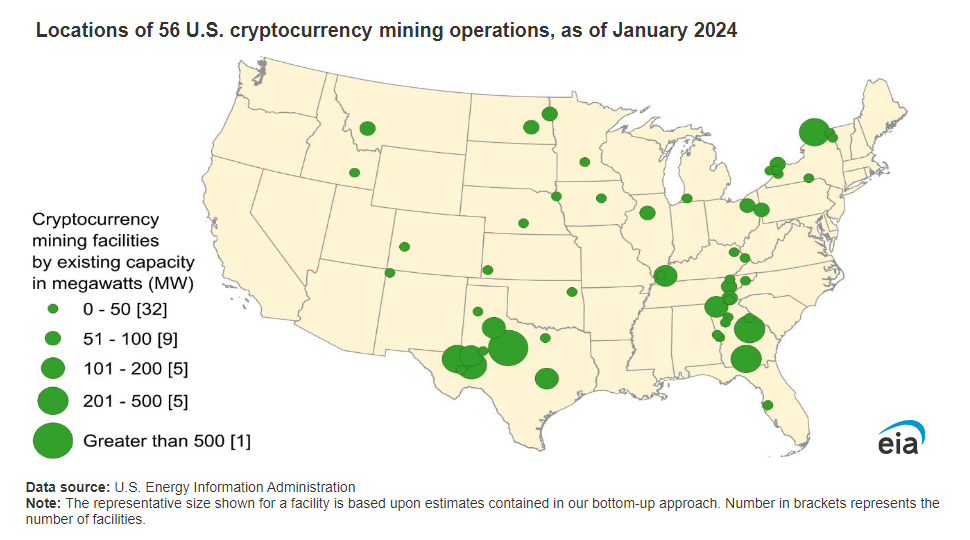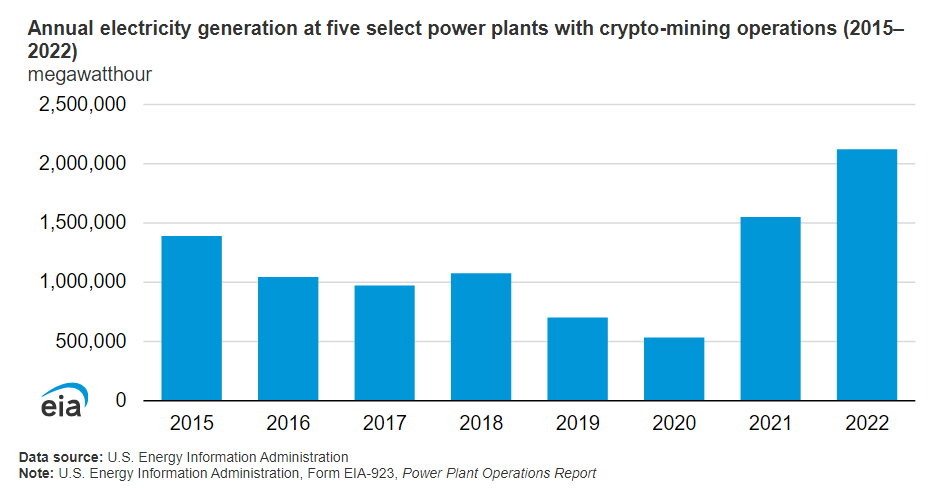A current report launched by the US Vitality Data Administration (EIA) has dropped at mild the substantial electrical energy consumption related to Bitcoin mining operations throughout the nation.
The info reveals that these operations are consuming between 0.6% to 2.3% of the nation’s complete electrical energy, a determine equal to the annual electrical energy wants of roughly 3-6 million American properties.
Progress Of Bitcoin Mining In The US
This surge in electrical energy utilization is primarily attributed to the speedy progress of Bitcoin mining in the US, spurred by two key elements.
Firstly, the Chinese language authorities’s crackdown on cryptocurrency mining in 2021 prompted many operations to relocate to the US, the place extra favorable regulatory environments had been sought.

Secondly, a number of main Bitcoin mining firms have gone public lately, establishing amenities in energy-rich states akin to Texas and New York.
Regardless of the trade’s claims of financial advantages and job creation, the escalating electrical energy consumption has raised considerations amongst policymakers and grid planners.
Bitcoin presently buying and selling at $43,082 on the day by day chart: TradingView.com
Whereas the report acknowledges these apprehensions, it additionally presents the trade’s perspective. Proponents of Bitcoin mining argue that their operations are comparatively “clear” and energy-efficient when in comparison with different industrial actions.
They emphasize the usage of renewable vitality sources by many miners and level to the upcoming Bitcoin halving occasion, which could incentivize much more environment friendly mining practices.

Regardless of these arguments, consultants stay divided on the sustainability claims of the trade. The energy-intensive nature of Bitcoin’s proof-of-work consensus mechanism continues to be some extent of rivalry, with the true environmental impression nonetheless topic to ongoing debate.
Moreover, the potential impression of the halving on vitality consumption necessitates additional monitoring and evaluation.
In essence, the current research revealing that Bitcoin mining accounts for two% of U.S. electrical energy consumption means that considerations about its environmental impression could also be overblown.
Whereas not insignificant, this fraction seems comparatively modest within the broader context of the nation’s numerous vitality portfolio. Nonetheless, ongoing scrutiny and a nuanced strategy are important because the cryptocurrency trade navigates the fragile steadiness between technological innovation and environmental duty.
Shifting ahead, a balanced and data-driven strategy is important to navigate this advanced problem and make sure the accountable improvement of the cryptocurrency ecosystem.
Featured picture from Adobe Inventory, chart from TradingView












